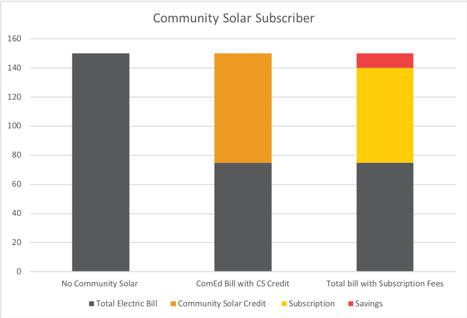By: Pivot Energy
April 11 2019

By: Kacie Peters
Director of Business Development
Gold is a huge motivator. During the gold rush, hundreds of thousands headed west to strike it rich. But not everyone made a fortune in the gold rush, and not every community solar developer in Illinois will either.
Rate design and credit offsets are particularly complex in the Illinois market, and without knowing how to set the subscription value, you could be creating a product that customers don’t want or one that crushes the returns for the project… In other words, you’ll be left with “fool’s gold.”
A community solar subscriber pool is like a power purchase agreement (PPA) offtaker for a community solar asset. The rates in which subscribers pay should offset the costs to construct and operate the solar. Luckily, in Illinois, incentives from the Illinois Power Agency (IPA) mean that not 100% of cash flows need to come from subscribers. Still, subscription income will be an integral part of community solar, particularly after renewable energy credit (REC) income stops after year five. So what’s the best rate to offer?
The common perception is that a subscriber will not voluntarily pay more for community solar than utility power. Illinois energy prices are tight, and community solar only offsets about 50% of the charges on a residential electric bill. Practically, this means the ceiling for subscriptions is about 6 cents in ComEd and about in 4.5 cents in Ameren. However, realistically, it needs to be lower than this to attract subscribers on price.
To make matters even more complicated, when a subscriber is on a third-party supply rate (ARES), their energy offset could be even less. This variability means that owners will likely need not just one rate assumption for subscribers, but a variety of subscription options to meet the market.
Think about how much work you are willing to do to save money in your household. Would you spend hours searching coupon books to save $0.50 on your next trip to the grocery store? Would you read and execute long term contracts to save $2/month on electricity? Maybe you are the person who loves bargain hunting, but if consumers don’t exceed some threshold of savings, the opportunity costs of negotiating a 15-year community solar contract aren’t justified.
So, for a subscription to be attractive, it must be at a rate meaningfully lower than the energy credit. Studies from other community solar markets show that customers are likely to review contracts when they are able to save around $10/month on electricity. What does saving $10/month look like in real life?

One key lesson to note: the subscriber is seeing a 15% savings from the bill credit, not from their total electric bill. Community solar marketing phrases like “save 15% today!” can be confusing and potentially misleading, so don’t over-simplify the message.
If a subscriber is on a competitive ARES rate that is lower than the utility default service rate, a 15% credit offset won’t add up to $10/month. For those users, you may need to communicate different savings or create a separate subscription offer with a lower rate.
If 6% of total bill savings doesn’t sound like an attractive offer, owners can offer an even steeper discount. But there are some driving factors that may serve as a limit for the competing offers on the market:
In Illinois, there will be a rush of prospectors all looking to strike it rich with community solar. But if your subscription is priced too high, there may not be meaningful savings to attract subscribers. And, if it’s too low, you face not meeting the returns necessary to create a financeable asset. Smart asset managers must not just chase the shiny objects of high rates or plentiful subscribers, but instead, create a meaningful balance to create real value or be left with a bunch of fool’s gold.
Pivot Energy
Together, solar and storage offer the unique ability to lower both demand and energy portions of a customer’s electricity bill.